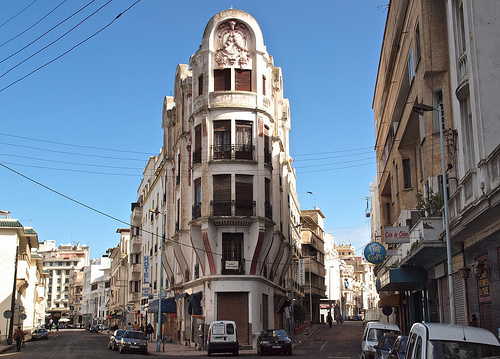Bangkok is a late capitalist capital par excellence. Everywhere, from the thronged pavement stalls of the tourists strips, to the plush and shiny malls, the seedy red light bars and the alleyways of Chinatown is laden with stuff: things to buy, services to purchase, all provided with a ready smile. There is no city I can think of where consumption is so conspicuous, and so varied. If you can’t buy it in Bangkok it likely doesn’t exist. As I once wrote, everything the human mind can devise or imitate is on sale here, often advertised commandingly on giant billboards or slick skytrain commercials. I saw one new (and well-situated) condo development tagged shamelessly, “Make yourself the centre of the universe!”
But this city of instant gratification and temptation can be a fickle monster. Trends are big here. Fads sweep through the city and then ebb away, like tsunamis. One minute everyone is crazy for yakiniku restaurants and then suddenly its all about tapas bars or organic wine. That is part of the fun of the city, gauging its obsessions du jour.
An interesting and unexpected trend I noticed on this trip was that the iconic Thailand elephant pants – beloved of backpackers but something of a running joke among the country’s more fashion forward citizens – have been (re)appropriated by Thai young people. I saw more than a few baggy Koh Phangan-style pants on hip Bangkok youth in the night markets and “walking streets”.
Even more interesting was the adoption of thanaka. The traditional Burmese herbal face-paste, until recently the preserve of the elderly and provincial, has made a big comeback in the capital, with a repackaged version given a push from a local personal care goods company. Charmingly yellow powdered faces were visible (often on working class people) around the city.
At the other end of the spectrum, well-to-do Bangkok seems to be flirting with another unlikely import. The city’s African music scene has always been surprisingly healthy but following the lead of trailblazing world music club Studio Lam, there are now at least two other African music-friendly venues aimed at upwardly mobile locals: 12 x 12, another bar in Thonglor described as a “Japanese hipster’s dream” and Third World Bar, on the second floor of the old Tapas on Silom Soi 4.
A less wholesome trend was one I read about in alarming news reports. Apparently the practice of facial surgery to create dimples – by piercing the cheeks with metal pins – had caught on and was now being practiced by unregulated and unqualified merchants at Chatuchak market, according to the lurid reports in the press.
But metal cheeks and Afro beats aside, the trend that had the biggest impact on my trip was undoubtedly an app. “Grab” is a must-download for anyone spending time in the city, a superior Southeast Asian sister to Uber. Not only is the Malaysian-based app wildly popular – meaning that a car is never more than a few minutes away – and cheaper than Uber with a better designed interface, it also eliminates the need to give your driver directions. You enter your destination and it pops up in English on an extremely detailed database, with a map directing your driver right there. No more tortuous conversations about “turn left after the Big C” across a language barrier, or taxi drivers who can’t read maps (or often, read at all, even if you have an address written in Thai). Grab revolutionises the ease with which you can explore Bangkok.



























